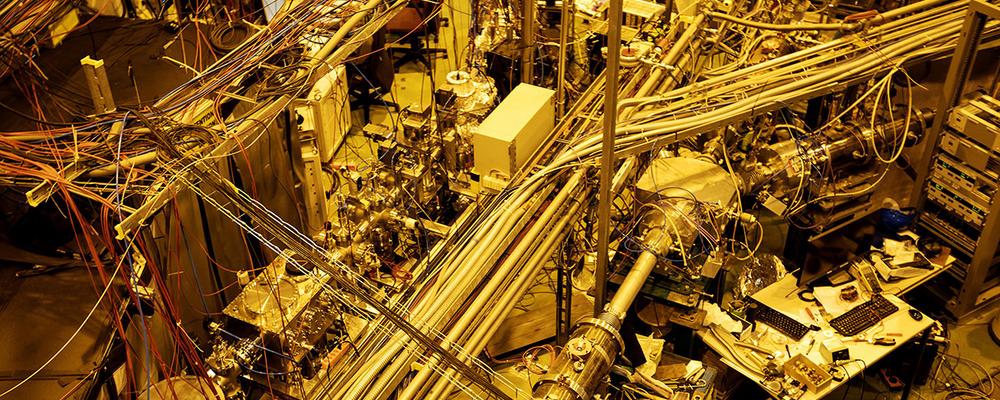The Earth’s crust contains only 70 milligrams of astatine, so the element is extremely rare. Now, however, researchers at the University of Gothenburg have succeeded in producing negative ions of astatine in the particle accelerator at the CERN laboratory, enabling them to study the element in more detail.
“Though the amounts we have obtained are very small, we can now fundamentally clarify and describe how the astatine atom works,” says Dag Hanstorp, professor of atomic physics at the University of Gothenburg.
“Astatine is not only rare, but also difficult to produce and retain because it decays quickly,” says Julia Karls, a doctoral student at the University of Gothenburg’s Department of Physics, who built the new detector called GANDALPH (Gothenburg Anion Detector for Affinity Measurements by Laser) that was used for the measurements.
Rare element in nature
In experiments, Dag Hanstorp and his colleagues used a proton beam to bombard the element thorium and form several other elements. One of them is astatine, which subsequently was separated from the other elements so it could be studied more closely.
“We have been working with the new detector at CERN, which was first tested on negative ions of the element iodine to see if it worked. We then proceeded with astatine,” says Hanstorp.
Because astatine is such a rare element, researchers have known very little about its chemical properties until now.
“We have been working towards this for five years and have finally managed to produce a result! This is the first time we have succeeded in performing this type of experiment on a radioactive element, and with these results we are paving the way for measuring elements that are heavier than astatine,” says Julia Karls.
“This is a breakthrough,” says Hanstorp.
Astatine is a semimetallic radioactive element belonging to the halogen group. There are four naturally occurring isotopes. These exist only in radioactive form, and they all have a short half-life. Through these studies, the researchers have now collected basic information on how astatine works at the atomic level.
“Electron affinity along with the ionization potential, which has also been measured at CERN, allows us to calculate the electronegativity of the element, which describes how it behaves chemically,” says Karls.
“We can provide the basic chemistry, something that can be useful in other research,” says Hanstorp.
These new insights can be used in cancer research
Astatine can be used in the treatment of ovarian cancer by linking the radioactive isotope astatine-211, which has a half-life[a1] of seven hours, to an antibody that attaches to cancer cells. Research in this field is being done by the Targeted Alpha Therapy (TAT) research team, which is based at the University of Gothenburg and Sahlgrenska University Hospital in Gothenburg.
“What makes this so compelling is the ability to use astatine to destroy metastases so small they cannot be detected or treated otherwise,” says Karls.
